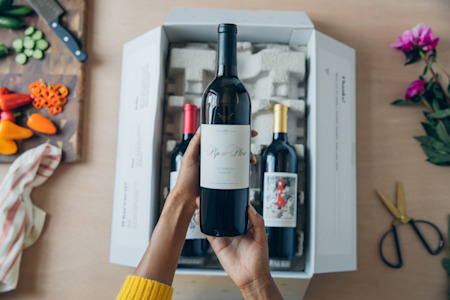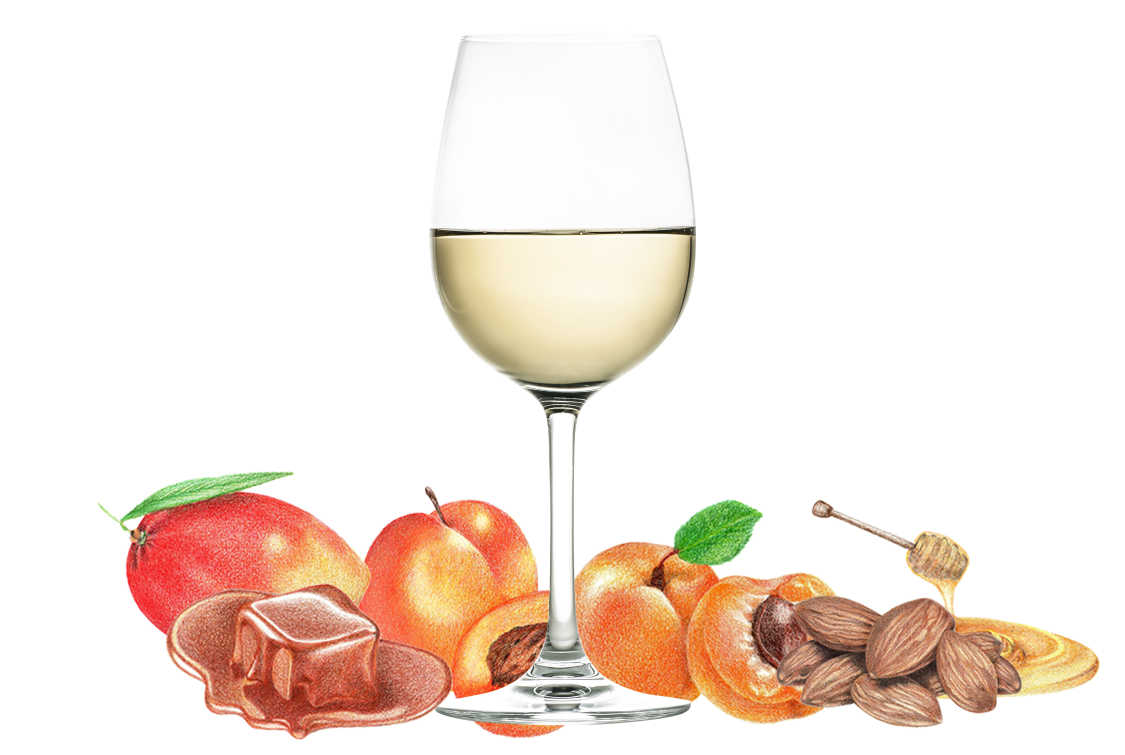Sauternes
A guide to the world's most sought after sweet wine
Sauternes, located in the Graves region of Bordeaux in France, is the source of the world's most sought-after dessert wines. There are varying accounts for how and when these late-harvest wines started being produced commercially; they could have originated in the 1800s or as early as the 16th century. To this day, Sauternes owes its character to the unique process in which it's made, and the terroir that makes that possible. Here's everything you need to know about Bordeaux's liquid gold.

Take Our Quiz Today
Get award-winning delicious wines from all over the world shipped straight to your door. Take the quiz to get the perfect pairings for your holiday season.
Take The Quiz TodayIN THIS ARTICLE:
Want personalized wines?
Get your first box of wines for $44.95 + free shipping.

How and Where Sauternes is Made
Sauternes is located southeast of the city of Bordeaux, hugging the Ciron River—a tributary of the Garonne River—which flows through the Graves. These two bodies of water are crucial to understanding how these sweet wines are made. The mingling of the cool Ciron with the warmer Garonne produces a mist that seeps through the vineyards. The humidity caused by this phenomenon encourages the growth of fungus on grapes. While this is typically a bad thing, here, it creates a type of noble rot called Botrytis cinerea.
Botrytis shrivels the grapes, concentrating the juices and sugars and giving the final wines high levels of residual sugar. But it's not that easy to achieve. First, these climatic conditions need to actually happen, which is not guaranteed every single year. A year that's a tad too dry or warm will not produce enough noble rot. The best châteaux typically decide not to make a dessert wine in these years, to protect the reputation and quality of their brand.
Then, vineyard teams must pick berries at their optimal point, with the most Botrytis. This is done by doing several sweeps, or tries, in the vineyard. This can extend harvest by weeks, as vintners have to let the grapes hang longer on the vines to get the right levels of fungi. Harvests in Sauternes generally start in mid-October and can go well into November, depending on the year.
Sauternes wine can be made from five different communes: Barsac, Bommes, Fargues, Preignac and Sauternes itself. Barsac is the only commune where winemakers can choose to label their wines either Barsac or Sauternes. Some decide to capitalize on the more famous name, while others wish to highlight the Barsac appellation's unique terroir. Its soils contain more limestone, which makes the wines leaner and fresher, while Sauternes' gravel-dominant soils make for richer styles.
Other appellations in the region that produce sweet white wines include Cadillac, Cérons, Loupiac and Ste.-Croix du Mont, which can all be the source of good values.
Sauternes Grape Varieties and Flavor Profiles
Just like dry white wines, sweet whites in Bordeaux are made from Sémillon, Sauvignon Blanc and Muscadelle, typically in a blend. There's generally a little more emphasis on Sémillon grapes here, but it largely depends on the producer. The best wines are lusciously rich and full-bodied, displaying ripe orchard and tropical fruit notes such as mango, guava, pineapple, apricot and peach, as well as other aromatic details like honeysuckle, caramel, baking spices and honey.
As discussed earlier with the differences between Barsac and Sauternes, the main variations in style are perceptible in the structure of the wines: medium- or full-bodied, opulent or elegant, medium- or high-acid, etcetera. The ripeness and intensity of the fruit can also vary depending on the winemaking style. Because of their high content in sugar, these dessert wines can be incredibly ageworthy and long-lived, the best of them showing gorgeously for decades.
Châteaux to Know
The most famous producer of the Sauternes region is Château d'Yquem, which is the only premier cru supérieur of the 1855 classification of Sauternes and Barsac. Yquem has a storied history dating more than 400 years, and has maintained its reign to this day for making some of the most high-quality Bordeaux wines.
There are 11 premiers crus, including Château Climens and Château Coutet in Barsac, and Château Clos Haut-Peyraguey, Château Guiraud, Château La Tour Blanche, Château Rieussec and Château Suduiraut in Sauternes. Seconds crus include Château Doisy Daëne and Château Doisy-Védrines, both in Barsac, among others.
The most important producer in the region that is not part of the classification is Château de Fargues. This is because the property did not make sweet wines until the 1930s, decades after the classification was drawn up. The family who owns Fargues, the Lur Saluces, were also the owners of Château d'Yquem until luxury-goods company LVMH purchased it in 1999 after two years of bitter fighting.
When to Drink Sauternes
While there is no doubt about Sauternes' prestige, the category has struggled to stay relevant in recent years as dessert wines have fallen out of favor. Who wants to drink an entire bottle of super-sweet, super-decadent wine? Of course, most dessert wines are available by the half-bottle exactly for this reason, and this is true of Sauternes also.
Many winemakers eventually saw the writing on the wall and added dry white wines to their range. This makes good financial sense, as these wines can be a source of cashflow in years when a château isn't able to make a sweet wine. It's also a more approachable introduction to the region. Some of the best dry whites in Bordeaux are made from the Sauternes region, such as Château d'Yquem's Y, Château Guiraud's Le G and Château Rieussec's R. (Not all of them follow the one-letter trend—you also have Château Coutet's Opalie, for example).
Sauternes also pairs deliciously with food. Foie gras is as classic a pairing as there is, but you can also try it with cheeses and fruit tarts or cakes. Some vintners here have attempted to take Sauternes out of the dessert-wine pigeon hole by encouraging wine lovers to drink it with savory appetizers and main courses—think chicken, turkey or even shellfish if you're feeling adventurous.
IN THIS ARTICLE
Want personalized wines?
Get your first box of wines for $44.95 + free shipping.


WinePrint™ by Firstleaf
Are you looking to learn more about your wine preferences? Check out our Wine Print for an in-depth look at your personal tasting profile. Discover your favorite wines, varietals, regions, and tasting notes and get personalized recommendations wherever you are.
Learn More